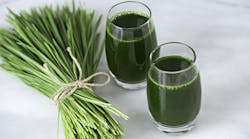Microplastics detoxification support for your body
What you’ll learn in this article
- How microplastics enter the body through everyday items like bottled water, synthetic clothing, and plastic food containers—and the emerging health concerns they pose.
- Why microplastics can overwhelm the body’s natural detoxification systems, leading to risks such as inflammation, oxidative stress, and potential impacts on overall and oral health.
- Practical strategies to help reduce microplastic exposure, including filtration, food storage choices, and clothing recommendations that can be discussed during patient education.
- Nutritional and lifestyle approaches—such as supporting liver function with cruciferous vegetables and healthy fats—that can help the body better manage unavoidable microplastic exposure.
Microplastics are everywhere, from the air we breathe to the food we eat, infiltrating our daily lives in ways we may not even realize (read “Microplastics in chewing gum and practical ways to reduce exposure”). These tiny plastic particles, often invisible to the naked eye, pose significant health concerns. While the body has natural detoxification mechanisms, the growing prevalence of microplastics necessitates deliberate steps to help our systems cope and thrive. This article explores what microplastics are, their effects, and actionable ways to minimize exposure and support your body's detoxification system.
What are microplastics?
Microplastics are extremely small plastic particles, typically less than 5 millimeters in size, resulting from the breakdown of larger plastic items or manufactured directly as microbeads and industrial additives. They are commonly found in synthetic clothing, plastic containers, packaging materials, and even personal care products. Recent studies reveal alarming microplastic contamination in water supplies, soil, and even human bodies, where these particles can accumulate with unknown long-term effects.1
Effects of microplastics on the body
Scientific research into the impact of microplastics on human health is still emerging, but early studies suggest harmful outcomes.2 Microplastics can act as carriers for toxic chemicals, potentially causing oxidative stress, inflammation, and cellular damage when ingested or inhaled. These particles have even been detected in the bloodstream, placenta, and vital organs, posing risks to immune function, hormonal balance, and overall health.3
Given that our natural detoxification systems, primarily the liver and kidneys, are already under stress from environmental toxins, the need to mitigate the risks posed by microplastics is more pressing than ever.
Ways to avoid microplastics4
While microplastics are pervasive, there are strategies to reduce exposure and limit their impact on your health. These include lifestyle changes that minimize contact with plastic materials and improve environmental sustainability.5
- Avoid plastic water bottles: Opt for reusable glass or stainless-steel bottles. Studies have found high levels of microplastic contamination in bottled water.
- Don’t heat plastic in the microwave: Heating plastic containers releases microplastics and harmful chemicals into your food. Use glass or ceramic alternatives.
- Filter your water6: Install a robust filtration system to remove microplastics and other contaminants from your drinking water. Ideally, choose glass or stainless-steel filtration systems.
- Choose natural fiber clothing: Synthetic fabrics like polyester and nylon shed microplastics into the water when washed. Opt for natural fibers like organic cotton, wool, or linen.
- Avoid plastic wrap and containers: Replace single-use plastic wraps with beeswax wraps or reusable glass containers to store food safely.
- Purify indoor air: Microplastics are also found in household dust. Invest in a high-quality air purifier to reduce airborne particles.
These simple, yet impactful, changes can drastically reduce your exposure to microplastics and create a healthier home environment.
Natural support to detoxify plastics7
The human body has an innate ability to detoxify harmful substances, primarily through the liver and kidneys, but the stress caused by modern environmental toxins like microplastics requires additional support. Enhancing detoxification can be achieved by incorporating specific nutrients, compounds, and lifestyle interventions.
Optimizing liver function
The liver is the body’s primary detox organ, responsible for processing and eliminating toxins. To support liver health and its ability to detoxify plastics, consider these strategies:
- Hydrate thoroughly: Drinking adequate water improves kidney and liver function to flush toxins.
- Consume fiber-rich foods: Fibrous vegetables, fruits, and whole grains promote efficient toxin elimination via the digestive system.
- Supplement with glutathione: This potent antioxidant neutralizes toxins, reduces oxidative stress, and aids in breaking down harmful substances for elimination. Liposomal glutathione, in particular, increases bioavailability.
Eat cruciferous vegetables
Cruciferous vegetables such as broccoli, cauliflower, and Brussels sprouts contain bioactive compounds like sulforaphane and glucoraphanin, which enhance liver enzyme activity and facilitate the detoxification of harmful substances. Their high fiber content also supports digestion and healthy hormone metabolism.
Leverage sulforaphane and glucoraphanin
Sulforaphane and glucoraphanin are sulfur-rich compounds found in cruciferous vegetables. These enhance the body’s phase II detoxification process, reducing the burden of microplastics and other environmental toxins.8 You can boost your intake by consuming freshly steamed broccoli or sprouts or supplementing with high-quality extracts (figure 1).
Incorporate healthy fats
Healthy fats, such as those found in extra virgin olive oil, avocado, and grass-fed butter, play a key role in maintaining cell membrane integrity. They also aid in binding to and removing fat-soluble toxins, including many plastic-related pollutants. Conversely, avoid processed seed oils like canola or soybean oil, which contribute to inflammation and cellular damage.
Increase phospholipid intake
Phospholipids, vital components of cell membranes, protect cellular integrity against environmental toxins. They help trap fat-soluble toxins in microscopic droplets, eventually excreting them through the digestive system. Foods rich in phospholipids, such as eggs, soy lecithin, and fish, or phospholipid supplements can facilitate this natural detox mechanism.
Regular infrared sauna use
Sweating is a key detoxification pathway, and studies show that bisphenol A (BPA) and other environmental toxins can be excreted through sweat. Getting regular sessions in an infrared sauna enhances circulation, boosts immune response, and supports your body’s natural detox processes.
Minerals and electrolytes
Our modern water supply often contains microplastics and lacks critical minerals lost through filtration. Replenishing these with supplements or mineralized water enhances cellular function and maintains the balance needed for effective detoxification.
Boosting your body’s defenses against microplastics
Detoxifying microplastics isn’t just about what you eliminate from your environment; it’s also about how you strengthen your body to deal with the unavoidable exposure we face today. By combining smart lifestyle shifts and scientifically supported detox strategies, you can empower your body to mitigate the risks posed by microplastics effectively.
Small changes, like drinking purified water or adding cruciferous vegetables to your meals, can lead to remarkable improvements in your overall health and resilience. Start supporting your body today to better manage the toxins of tomorrow.
Editor’s note: This article originally appeared in Perio-Implant Advisory, a chairside resource for dentists and hygienists that focuses on periodontal- and implant-related issues. Read more articles and subscribe to the newsletter.
References
- Li Y, Chen L, Zhou N, Chen Y, Ling Z, Xiang P. Microplastics in the human body: a comprehensive review of exposure, distribution, migration mechanisms, and toxicity. Sci Total Environ.2024;945:174215. doi:10.1016/j.scitotenv.2024.174215
- Wu P, Lin S, Cao G, et al. Absorption, distribution, metabolism, excretion and toxicity of microplastics in the human body and health implications. J Hazard Mater.2022;437:129361. doi:10.1016/j.jhazmat.2022.129361
- Dzierżyński E, Gawlik PJ, Puźniak D, et al. Microplastics in the human body: exposure, detection, and risk of carcinogenesis: a state-of-the-art review. Cancers (Basel).2024;16(21):3703. doi:10.3390/cancers16213703
- Prata JC, Castro JL, da Costa JP, Duarte AC, Cerqueira M, Rocha-Santos T. An easy method for processing and identification of natural and synthetic microfibers and microplastics in indoor and outdoor air. 2019;7:1-9. doi:10.1016/j.mex.2019.11.032
- Calero M, Godoy V, Quesada L, Martin-Lara MA. Green strategies for microplastics reduction. Curr Opin Green Sustain Chem.2021;28:100442. doi:1016/j.cogsc.2020.100442
- Cherniak SL, Almuhtaram H, McKie MJ, et al. Conventional and biological treatment for the removal of microplastics from drinking water. 2022;288(Pt 2):132587. doi:10.1016/j.chemosphere.2021.132587
- Fabiano N, Luu B, Puder D. Human microplastic removal: what does the evidence tell us?Brain Medicine.2025;1.aop:1-2. doi:61373/bm025c.0020
- Fahey JW, Liu H, Batt H, Panjwani AA, Tsuji P. Sulforaphane and brain health: from pathways of action to effects on specific disorders. 2025;17(8):1353. doi:10.3390/nu17081353
About the Author

Scott Froum, DDS
Editorial Director
Scott Froum, DDS, a graduate of the State University of New York, Stony Brook School of Dental Medicine, is a periodontist in private practice at 1110 2nd Avenue, Suite 305, New York City, New York. He is the editorial director of Perio-Implant Advisory and serves on the editorial advisory board of Dental Economics. Dr. Froum, a diplomate of both the American Academy of Periodontology and the American Academy of Osseointegration, is a volunteer professor in the postgraduate periodontal program at SUNY Stony Brook School of Dental Medicine. He is a PhD candidate in the field of functional and integrative nutrition. Contact him through his website at drscottfroum.com or (212) 751-8530.



